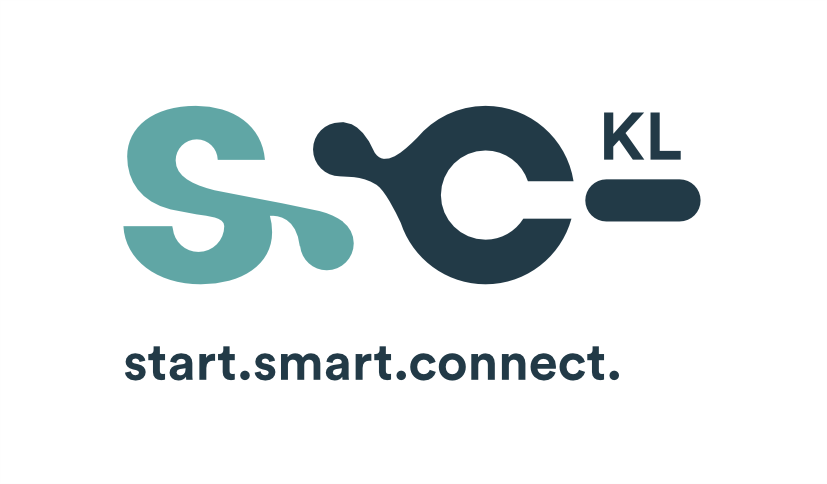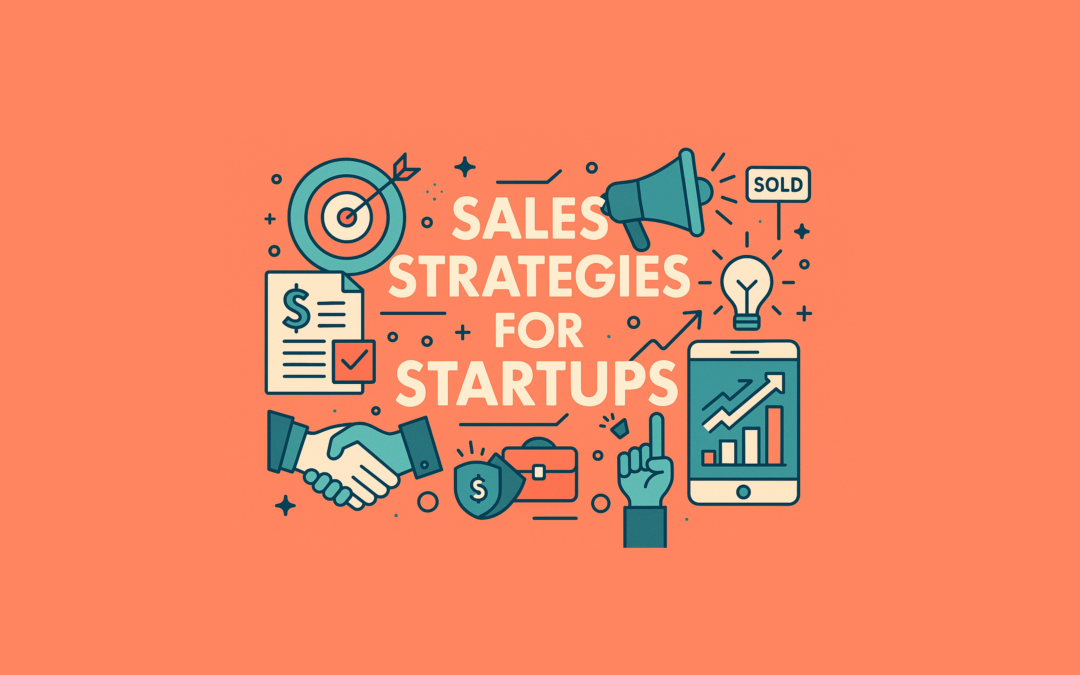Startup Success Through Sales: Strategies for Growth and Scaling:
‘90 per cent of startups that fail, fail because of sales.’ – says Klaus Wächter, sales expert, business angel, serial founder and inventor of the Startup Sales Canvas. In this course, you will learn how to successfully sell products or services as a startup. Sales are a decisive factor for the success of your start-up, because without sales there is no growth and no scaling.
In this course, you will learn about the most important aspects of sales for start-ups. Starting with the creation of a sales strategy through to its implementation in practice.
For more information about the SalesCanvas, the Business Angels Rheinland-Pfalz or the profile of Klaus wächter visit the following pages:
Video 1: Start and introduction
Klaus Wächter introduces himself and gives a brief introduction to the topic of sales.
You can access the chapters of the video at the bottom of the screen.
Video 2: Why do startups fail?
You can access the chapters of the video at the bottom of the screen.
Video 3: Salesstrategy
You can access the chapters of the video at the bottom of the screen.
Video 4: Positioning
You can access the chapters of the video at the bottom of the screen.
Video 5: Competition and Unique selling point
It is important to know who you share the market with and how your unique selling point (USP) sets you apart from the rest of the competition.
You can access the chapters of the video at the bottom of the screen.
Video 6: Target gropus
You can access the chapters of the video at the bottom of the screen.
Video 7: Buyer persona
You can call up the chapters of the video at the bottom of the screen.
Video 8: Distribution channels
You can access the chapters of the video at the bottom of the screen.
Video 9: Price and price models
You can access the chapters of the video at the bottom of the screen.
Video 10: Marketing
Marketing describes all the measures you can use to bring services and products to customers.
You can access the chapters of the video at the bottom of the screen.
Video 11: Numbers, datas, facts
You can access the chapters of the video at the bottom of the screen.
Contact
Do you have questions or are you looking for an investor? Get in touch with Klaus Wächter:
Klaus Wächter
Iconex KG
Sebastian-Kneipp-Str. 45
56179 Vallendar
Email: waechter@i-conex.de
Links, Downloads and Templates
Further Links:
Bessemer Venture Partners: Distribution and conversion models for consumer startups – published at: https://www.bvp.com/atlas/investor-field-notes-distribution-and-conversion-models-for-consumer-startups#Distribution-tactics
How VCs make investment decisions. Part 3: Distribution – published at: https://www.linkedin.com/pulse/how-vcs-make-investment-decisions-part-3-distribution-innofund-vc/
Best practice examples – 10 Top Distribution Startups and Companies in Germany – published at: https://www.f6s.com/companies/distribution/germany/co
Podcast: Startup101 #3 – Sales – published at: https://www.deutsche-startups.de/2022/03/14/startup101-3-vertrieb/
“First, build distribution for your vision, then develop your product” – published at: https://www.deutsche-startups.de/2021/08/27/gruenderalltag-bastian-maiworm/
“The 10 most common mistakes founders make in B2B sales” – published at: https://www.deutsche-startups.de/2021/04/23/die-10-haeufigsten-fehler-b2b-vertrieb/
“Never outsource your sales to external service providers” – published at: https://www.deutsche-startups.de/2020/06/15/nuucon-interview-pivot/
Downloads:
Startup Sales Canvas & Slides from the Video: https://seafile.rlp.net/d/0bc9a268486c4c02b93d/
FAQ - Frequently asked questions
How does the Startup Sales Canvas help me specifically?
Many people wonder whether the canvas is just an overview or whether it really helps in practical terms. The canvas is like a map: it shows you which elements of your sales strategy you have already thought through and where there are still gaps. This allows you to quickly identify where action is needed and work on your sales planning in a structured manner.
How do I find a clear positioning for my startup?
After completing the positioning module, the question often remains: “How specific does it need to be?” Good positioning concisely describes what your startup stands for, what sets you apart from your competitors, and why customers should trust you. A short sentence that combines your vision, benefits, and differentiation is helpful.
What resources do I need to plan for sales?
Teams often ask, “Do we need a large sales team right away?” Not necessarily. It is more important to honestly assess what resources you currently have: time, budget, expertise, contacts, and tools. In the early stages, a founder can take care of sales themselves, but later on, clear roles and responsibilities are needed.
How do I analyze the competition effectively?
There is often uncertainty: “Do we need to know every competitor in detail?” No. It is important to understand your direct competitors and their strengths/weaknesses. In addition, you should consider how you stand out – this could be price, service, technology, or a special business model.
What does unique selling point (USP) mean in sales?
The USP answers the question: “Why should customers buy from us?” It should be clear, understandable, and relevant—not from your point of view, but from the customer’s point of view. Example: “Our solution saves companies 30% of the time spent on data analysis.”
How specifically must the target group be defined?
Many start with “anyone who might need it.” It is more effective to describe a clearly defined target group—such as industry, company size, or contact person’s role. The more specific you are, the easier it will be to choose the right channels and messages.
What is the difference between a target group and a buyer persona?
The target group describes an entire customer group, e.g., “medium-sized manufacturing companies.” A buyer persona is a concrete, fictional profile that represents a typical representative of this group – with a name, goals, concerns, and purchasing motives. This makes your customers more tangible.
How do I choose the right sales channels?
After the course, many people ask themselves, “Should we be present on all channels?” No. The decisive factor is where your target group can actually be reached. For B2B, trade fairs, LinkedIn, or personal networks may be more important than social media. For B2C, an online store or influencer marketing may be more relevant.
How do I develop a suitable pricing model?
Frequently asked question: “How do we know if our price is right?” The pricing model should cover your costs and reflect the perceived value for customers. Test different variants (e.g., subscription, pay-per-use, one-time payment) and collect feedback from initial sales conversations.
How are sales and marketing related?
Marketing ensures visibility and generates interest, while sales builds on this interest and closes the deal. Both must be coordinated: same messages, same target groups, coordinated channels. Good interaction saves resources and increases impact.
What data and metrics are important for sales?
Many ask, “What should we measure?” Meaningful key figures include the number of leads, conversion rate (from initial contact to closing), average order value, sales cycle duration, and customer acquisition cost (CAC). This data shows whether your sales process is working and where you need to make adjustments.
Glossary
Core Concepts
Sales Strategy
Short definition: A plan for how a company sells its products or services in the market.
Benefit: Creates clarity about target groups, channels, and measures.
Example: Direct sales vs. distributors.
Positioning
Short definition: The perception of a product in the market compared to competitors.
Benefit: Sharpens the profile and highlights differences.
Example: “The most secure communication tool for research teams.”
Competition & Unique Selling Point (USP)
Short definition: USP = Unique feature that makes the decisive difference from competitors.
Benefit: Makes customer choices easier.
Example: “Only provider with integrated security certification.”
Target Group
Short definition: A group of potential customers a company wants to address.
Benefit: Focuses on relevant markets and customer needs.
Example: Medium-sized laboratories in Germany.
Buyer Persona
Short definition: Data-based, fictional customer profile that summarizes typical traits, needs, and behaviors.
Benefit: Helps tailor offers and communication precisely.
Example: “Dr. Schmidt, 42, lab director, values data security.”
Sales Channels
Short definition: Paths through which a product or service is sold.
Benefit: Determines reach and efficiency.
Example: Online shop, partner networks, direct sales force.
Pricing & Pricing Models
Short definition: Setting the price and payment structure.
Benefit: Directly impacts revenue, positioning, and customer access.
Examples: Subscription, pay-per-use, one-time purchase.
Marketing
Short definition: Activities to increase awareness, interest, and demand.
Benefit: Supports sales through visibility.
Example: Social media campaign for new software.
Facts & Figures (KPIs)
Short definition: Measurable data used in sales (e.g., KPIs).
Benefit: Make sales success measurable and manageable.
Example: Conversion rate, revenue, new customers.
Advanced Terms for Scientists
Lead
Short definition: A potential customer who has shown interest.
Benefit: Starting point for the sales process.
Example: Newsletter sign-up.
Lead Generation
Short definition: Activities to acquire new prospects.
Benefit: Ensures a continuous flow of customer contacts.
Example: Whitepaper download in exchange for an email address.
Lead Qualification
Short definition: Assessing whether a lead has real purchase potential.
Benefit: Saves time and focuses sales efforts.
Example: Prospect with budget and buying intent = qualified lead.
Conversion Rate
Short definition: Percentage of prospects who become paying customers.
Benefit: Indicator of sales efficiency.
Example: 100 leads, 10 purchases → conversion rate = 10%.
Customer Journey
Short definition: The entire path a customer takes from first contact to purchase.
Benefit: Helps design suitable measures for each phase.
Example: Awareness → Consideration → Purchase.
Sales Funnel
Short definition: Model that maps customers from first contact to purchase in phases.
Benefit: Structures the sales process.
Example: Leads → Prospects → Offers → Buyers.
CRM (Customer Relationship Management)
Short definition: Systematic management of customer contacts and relationships, often via software.
Benefit: Simplifies tracking, analysis, and retention.
Example: HubSpot or Salesforce.
Account-Based Marketing (ABM)
Short definition: Tailored marketing and sales strategy for key accounts.
Benefit: Efficient for B2B with few but large customers.
Example: Custom campaign for a major pharma company.
Upselling
Short definition: Selling a more expensive or enhanced version of a product.
Benefit: Increases revenue per customer.
Example: Premium license instead of basic version.
Cross-Selling
Short definition: Selling complementary products or services.
Benefit: Increases customer value and loyalty.
Example: Add-on module for existing software.
Churn Rate
Short definition: Percentage of customers lost within a given period.
Benefit: Early warning indicator for customer satisfaction.
Example: 5% of subscribers cancel monthly.
Customer Lifetime Value (CLV)
Short definition: Total expected revenue a customer generates during their relationship with the company.
Benefit: Basis for marketing and sales investment decisions.
Example: CLV of €2,000 per customer.
Key Account Management (KAM)
Short definition: Managing and expanding relationships with key customers.
Benefit: Secures long-term partnerships.
Example: Dedicated contact person for major clients.
Go-to-Market Strategy (GTM)
Short definition: A plan for successfully introducing a product to the market.
Benefit: Connects marketing, sales, and positioning.
Example: Launch of a new medical device in three phases.
Sales Enablement
Short definition: Providing knowledge, tools, and materials to help sales teams sell more effectively.
Benefit: Increases sales efficiency.
Example: Pitch decks, training, whitepapers.
After-Sales Service
Short definition: Customer support after purchase.
Benefit: Increases satisfaction and repeat business.
Example: Maintenance package for machinery.
Key Sales Metrics
- CAC (Customer Acquisition Cost): Cost to acquire a new customer.
- ARPU (Average Revenue per User): Average revenue per customer.
- MRR (Monthly Recurring Revenue): Monthly recurring revenue (e.g., subscriptions).
- Pipeline: Total of all ongoing sales opportunities.
- Quota: Sales target an employee should achieve within a given period.

Hi, i'm Lukas
and I manage the e-learning program. Do you have any further questions? Feel free to contact me via email: theisen@gruendungsbuero.info

